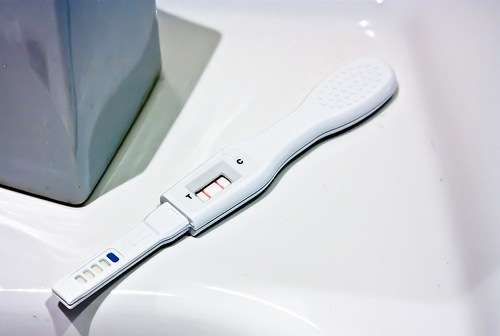
The Day Before Ovulation Is Your Most Fertile Day
Ovulation tests — one of the most accurate ovulation-tracking methods out there — respond to the surge in a hormone called Luteinizing Hormone (LH for short) which is produced by the pituitary gland near your brain. Once this hormone is released, a signal is sent to the ovaries to release a single mature egg into the fallopian tube. Your single most fertile day during each cycle is, in fact, the day before ovulation. This means that a positive ovulation test is a great signal that you should get down to business! If you time intercourse right, sperm will already be waiting for your egg when it is released into your fallopian tube, and you will be maximizing your chances of conceiving.

How To Track Ovulation
A woman's fertile window will last seven days — at best. Once ovulation has occurred, the egg will remain viable for 12 to 24 hours, but sperm can survive within the female reproductive system for five to seven days. Women who know exactly when they are fertile are going to boost their chances of getting pregnant soon, and you have lots of choices when it comes to ovulation-tracking methods. Ovulation tests detect Luteinizing Hormone in your urine, and are extremely reliable as well as user friendly. Charting your basal body temperature will give you very accurate results as well, but requires a little more work on your part. Using an ovulation calendar, monitoring your cervical mucus, and paying attention to natural ovulation signs like tender breasts and ovulation pain are other options at your disposal.

What Is Ovulation?
Ovulation isn't nearly as obvious as menstruation, but it is just as important an event during the menstrual cycle. A single mature egg is normally released during ovulation, roughly halfway through the menstrual cycle after the completion of the follicular phase. The egg will remain viable for 12 to 24 hours after release from the relevant ovary, but the fertile window opens between five and seven days before that happens because sperm can survive inside the female reproductive system for a while. Some women are able to feel when they ovulate, but most will have to rely on one of the many ovulation-tracking methods available to find out when they are most fertile. Tracking ovulation isn't just for women who want to get pregnant, though — knowing when you are fertile can help you prevent an unwanted conception too.
- Important notification about information and brand names used in this slideshow!
- Photo courtesy by Latina Power2009 on Flickr : www.flickr.com/photos/26994160@N03/2937855797/
- en.wikipedia.org/wiki/Ovulation

Women Normally Release One Egg Per Cycle
Immature eggs called oocytes develop in women while they are still a fetus. By the 20th week of pregnancy, the female reproductive system is completely developed, and all egg cells a woman will ever have are already there. Women are, in other words, born with all the eggs they will ever have! A number of follicles will be active during the follicular phase of the menstrual cycle, which happens before ovulation. Only one mature egg is usually released when a woman ovulates, however. Rarely, two eggs will come forth from a woman's ovaries during a menstrual cycle. If these eggs are fertilized, fraternal twins can result.
- Important notification about information and brand names used in this slideshow!
- Photo courtesy by cherietaffy on Photobucket : media.photobucket.com/user/cherietaffy/media/imagemain_sperm_egg.gif.html?filters[term]=egg%20sperm&filters[primary]=images&sort=1&o=34
- americanpregnancy.org/gettingpregnant/understandingovulation.html
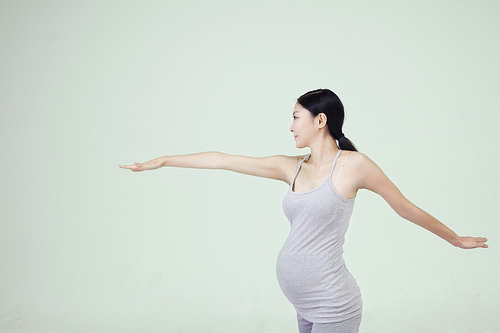
Implantation Happens Six To Twelve Days After The Egg Is Fertilized
Once a mature egg is released from one of a woman's ovaries, it will travel down to the relevant fallopian tube. Here, sperm may already be waiting. They'll go into overdrive once they detect the presence of the egg, and will all fight to win the race to the egg. If an egg is fertilized, its cells will rapidly begin dividing while it continues its journey down to the uterus. Here, it will hopefully manage to implant. Implantation normally takes place between six and 12 days after the egg was first fertilized. Some women will notice a slight spotting after implantation, something that is called implantation bleeding. Soon enough, the woman will notice that she missed her period and will be able to take a pregnancy test.

Lower Pelvic Pain Can Indicate Ovulation
Do you ever experience a slight pain or discomfort in your lower pelvic area, either on the left or right? If this pressure shows up every month roughly halfway through your menstrual cycle, there is a very good chance that you are dealing with ovulation pain. Also called mittelschmerz, a German word for the same experience, ovulation pain is a pretty reliable indication that you are ovulating. Not all women have this pain, but don't worry that there is something wrong with you if you do have it. Instead, embrace it as a free ovulation test! Constant or intermittent pelvic pain that occurs throughout the menstrual cycle is not going to be ovulation pain, and may be a sign of a medical problem like a cyst, endometriosis, or Pelvic Inflammatory Disease. Women who suffer from pelvic discomfort when they are not ovulating should seek medical help.
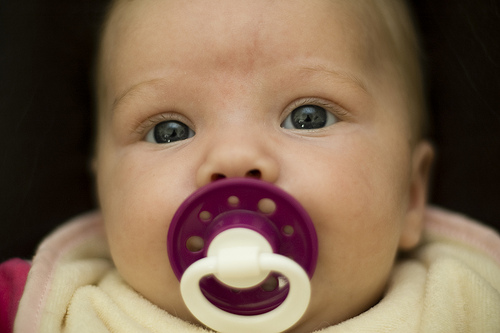
When You Don't Ovulate
One in three infertile women are infertile due to ovulation disorders. Ovulation disorders can have various causes, including Polycystic Ovary Syndrome and hormonal imbalances. Women who do not ovulate naturally cannot get pregnant without medical help, but that doesn't mean they necessarily have to undergo IVF. Fertility drugs, and the popular ovulation-inducing medication Clomid in particular, may be enough. Clomid success rates are high: 40 percent of couples who received the drug become pregnant over the course of their treatment. Clomid is normally used between three and six cycles. Most women find out that they don't ovulate after fertility testing, but it is a good idea to warn your doctor if you use ovulation tests without ever getting a positive result.
- Important notification about information and brand names used in this slideshow!
- Photo courtesy by Kitt Walker on Flickr : www.flickr.com/photos/kittwalker/3937338098/
- en.wikipedia.org/wiki/Ovulation
- http://www.babycenter.com/0_common-causes-of-fertility-problems-in-women_1228906.bc#articlesection2

Ovulation And Birth Control Methods
Birth control methods prevent pregnancy in a variety of different ways. Combined hormonal contraceptives like the combination birth control pill suppress ovulation by disrupting the normal hormonal processes that guide the menstrual cycle. These methods also thicken cervical mucus, turning the vagina into an environment that is hostile to sperm. Progestogen-only contraceptive methods do make ovulation less frequent, but they rely more on thickened cervical mucus to prevent conception. Yet other birth control methods, like condoms and diaphragms, do not prevent ovulation at all. These methods simply ensure egg and sperm do not meet. Women who use contraceptives that don't suppress ovulation still benefit from knowing when their most fertile days are, so that they can take additional care during that window.
- Important notification about information and brand names used in this slideshow!
- Photo courtesy of lookcatalog by Flickr : www.flickr.com/photos/nateone/2713580189/
- en.wikipedia.org/wiki/Ovulation

Ovulation Is Sexy
It's official: women are at their sexiest during ovulation! Studies show that ovulation influences the way in which women dress, talk, and do their make-up. Those women who have partners with less characteristically masculine features are more likely to lust after men with strong jaw lines when they are fertile too. In addition, research suggests that men have a "radar" to detect when their partner ovulates — they tend to be more jealous of other men in their partner's life during her fertile period. To top it all off, women apparently have a tendency to stay away from their fathers while they are ovulating.
- Important notification about information and brand names used in this slideshow!
- Photo courtesy by lululemon athletica on Flickr : www.flickr.com/photos/lululemonathletica/4685680163/
- americanpregnancy.org/gettingpregnant/understandingovulation.html
- http://www.livescience.com/10828-booty-call-spot-fertile-woman.html

Stress Can Prevent You From Ovulating
Stress has a negative influence on the whole body, and unfortunately that includes the reproductive system. A few different regions in the brain are affected, among which the hypothalamus which regulates the pituitary gland. The pituitary gland is where Luteinizing Hormone, the hormone that triggers the ovaries into ovulating, is produced. See the chain reaction? Your body knows that it may not be a good time to have a baby when you are stressed. If you are trying to conceive, feeling relaxed and happy benefits more than your mental health — it affects your fertility in a very real way.
- Important notification about information and brand names used in this slideshow!
- Photo courtesy of db Photography | Demi-Brooke by Flickr : www.flickr.com/photos/demibrooke/2490814887/
- americanpregnancy.org/gettingpregnant/understandingovulation.html




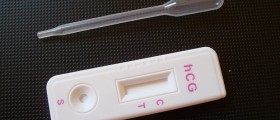

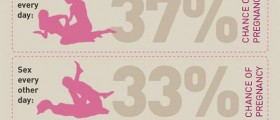
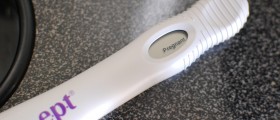

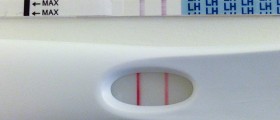
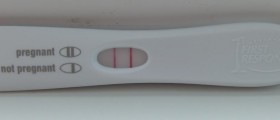







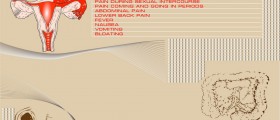

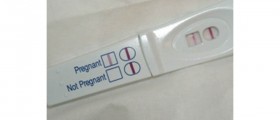






Your thoughts on this
Loading...